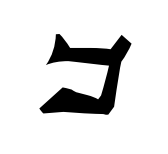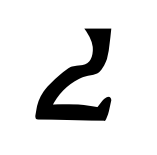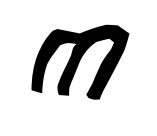Esoteric Roots of the Due Guards
This post is an abridged adaptation of an article I wrote entitled “Kabbalistic Roots of the Masonic Modes of Recognition in the Craft Degrees,” in which I explore some of the connections (as I see them) that exist between certain Masonic modes of recognition, and certain aspects of Kabbalistic though. That paper goes much more in depth than I will here, but I would like to share some of my findings with the world, since I find them fascinating. As a disclaimer, I will say up front that I will not break any of my obligations, but rather I plan to only allude to signs and symbols that any Master Mason should already be familiar with.
Freemasonry, we’re told, is a “peculiar system of morality, veiled in allegory and illustrated by symbols.” Generally speaking, how each brother of the Craft decides to interpret those symbols and apply them to his own life is largely up to him. This practice of showing symbols and allowing the initiate to interpret them dates back to the Greo-Roman mystery schools. The word mystery comes from the Greek word myo (μύω) and means “to close or shut.” From this same root comes the word mystes (μύστης), which means “[an] initiate”. So, to speak of “mystery schools” and to speak of the “initiatic tradition” is to speak of one and the same thing.
When I first began learning about the initiatic tradition, before I became a Freemason, I found it somewhat hard to comprehend. Why would showing symbols and metaphors be more effective than just telling someone whatever secrets or moral truth they wanted to impart? It dawned on me one day, that the same lack of communicative ability exists with us today, even outside of esoteric initiation. If you’ve ever though of something, said it, and then thought, “that didn’t come out quite like I meant,” then you’ve experienced the same inability of language to convey certain ideas. For that matter, could you explain to someone what salt tastes like, without using the word “salty?” I would venture that it’s nearly impossible. Though I don’t remember who told it to me, I always have in my mind a certain maxim: once a specific thought is translated into words, it ceases to be the original thought. Nobody understood this more than the initiatics. Metaphors, symbols, allegories — these express ideas far more succinctly and efficiently than words ever could.
This is somewhat contradicted by the original rabbis and practitioners of a Jewish mystical system called Kabbalah (Hebrew qabalah, קבלה, meaning “reception”). Whereas the initiatics in their mystery schools believed that words could not convey ideas sufficiently, Kabbalah teaches that everything know as existent is actually made up of words. There is no separation between what something is called and what something is. The Sefer Yetzirah (ספר יצירה, literally “book of creation”), the earliest known book about language as it related to the Kabbalah, explains how the God of Israel created existence using a series of words, and how those words and their associations came to become the Hebrew alphabet. This is not to say that the original progenitors of Kabbalah were so bold as to assume that their God spoke Hebrew as we understand it today, but keep in mind that words are nothing more than a series of vibrations from the throat, and everything that exists is nothing more than vibrations, down to the atomic level. Letters and words are symbols, metaphors for these vibrations of creation. This theory can be backed up by John 1:1, “in the beginning was the Word, and the Word was with God, and the Word was God.” It is worth noting that the Hebrew word used for “the Word” here, ha-dabar (הדבר) refers to a spoken word, as opposed to written.
Now, my point in all of this, is to explain that even letters can be symbolic of greater truths. According to the Sefer Yetzirah, every Hebrew letter is connected with a certain aspect of Deity, and therefore with a certain aspect of creation, with a number, with a concept, &c. In studying the due guards and penal signs, and trying to make a connection with Kabbalistic thought, I initially had some trouble connecting the two. It was only after using a technique of the Illustrious Brother Albert Pike, and looking instead at the Samaritan version of the Hebrew alphabet, that everything began to fall into place. When the letters fell into place, the concepts behind them made too much sense to disregard.
What I’ve found is that the due guards all represent, in shape, certain letters. The Entered Apprentice due guard resembles the Samaritan letter kaaf, analogous to the Hebrew letter kaf (כ).
 This name, kaaf, literally means “palm,” representative of manual work, which is quite appropriate given the teachings of the first degree. We are to learn to control our physical aspects by the gauge and the gavel, a teaching that is underscored by this letter’s association with Jupiter, a symbol that is alchemically associated with balance and equilibrium. We are to improve ourselves physically, by the work of the palm. The penal sign of the first degree associates it with the first triad of the Kabbalistic Tree of Life [note: a subject I explore in the full article, however not in this post], the beginning of divine emanation, yet incomplete.
This name, kaaf, literally means “palm,” representative of manual work, which is quite appropriate given the teachings of the first degree. We are to learn to control our physical aspects by the gauge and the gavel, a teaching that is underscored by this letter’s association with Jupiter, a symbol that is alchemically associated with balance and equilibrium. We are to improve ourselves physically, by the work of the palm. The penal sign of the first degree associates it with the first triad of the Kabbalistic Tree of Life [note: a subject I explore in the full article, however not in this post], the beginning of divine emanation, yet incomplete.
The Fellowcraft due guard resembles the Samaritan letter labad, analogous to the Hebrew letter lamed (ל).
 The name, labat, among other things, means “to teach” or “to discipline.” Again, this meaning should immediately prove apropos. The letter is also important because when combined with the Hebrew letter alef (א), we can create either the word “God” (אל, el), or the word “not” (לא, la) – an interesting juxtaposition of the everything and nothing. As Fellowcrafts, we stride the divide between darkness and light. We are neither fully illuminated nor full ignorant of knowledge. Lamed is also a title given to scholars and teachers, which all Fellowcrafts should strive to be – intellect and study being the central tenet of the degree. Finally, this letter’s association is with the astrological sign Libra, the scales. It represents balance, decision, a certain maturity of thought that can only come with proper study. The penal sign of the second degree associates it with the second triad of the Kabbalistic Tree, imparting further divine inspiration, though still incomplete.
The name, labat, among other things, means “to teach” or “to discipline.” Again, this meaning should immediately prove apropos. The letter is also important because when combined with the Hebrew letter alef (א), we can create either the word “God” (אל, el), or the word “not” (לא, la) – an interesting juxtaposition of the everything and nothing. As Fellowcrafts, we stride the divide between darkness and light. We are neither fully illuminated nor full ignorant of knowledge. Lamed is also a title given to scholars and teachers, which all Fellowcrafts should strive to be – intellect and study being the central tenet of the degree. Finally, this letter’s association is with the astrological sign Libra, the scales. It represents balance, decision, a certain maturity of thought that can only come with proper study. The penal sign of the second degree associates it with the second triad of the Kabbalistic Tree, imparting further divine inspiration, though still incomplete.
Finally, the due guard of the Master Mason degree may not resemble its Hebrew counterpart, but when compared to the Samaritan equivalent, one can certainly see the resemblance to the Samaritan letter yut. This letter is analogous to the Hebrew letter yod (י), which all Scottish Rite Masons especially will know as symbolically important.
 This letter’s name, yut, literally means “hand,” but has a different connotation than the letter kaaf (“palm”). This time the hand is not demonstrative of physical labor, but the idea of the creation coming from manual work. The Hebrew letter yod is a metaphorical flame; when blown upon it flickers and shifts and creates all the other letters. Beyond this, the letter yod is the “G,” the initial letter of the divine name, of special significance to all Freemasons. The final penal sign represents the lower triad of the Kabbalistic Tree, with full divine spirit, ready to deliver to mankind, as we are taught to do through and by the Craft.
This letter’s name, yut, literally means “hand,” but has a different connotation than the letter kaaf (“palm”). This time the hand is not demonstrative of physical labor, but the idea of the creation coming from manual work. The Hebrew letter yod is a metaphorical flame; when blown upon it flickers and shifts and creates all the other letters. Beyond this, the letter yod is the “G,” the initial letter of the divine name, of special significance to all Freemasons. The final penal sign represents the lower triad of the Kabbalistic Tree, with full divine spirit, ready to deliver to mankind, as we are taught to do through and by the Craft.
There is almost no end to the associations and symbolism that one can derive from the letters of the Hebrew alphabet. But at a cursory glance, it should become quite evident that these three letters don’t merely visually resemble the due guards of the degrees. Moreover, when combined with the symbolism of the Kabbalah, a whole new aspect of symbolism and light is opened up, and we learn that much more about our Craft and about ourselves.

Always wonderful to read your inspirations of masonry. You got me hooked and I hope you never stop, brother
Wonderful to hear that, brother. I’m just glad that the readers enjoy it 🙂